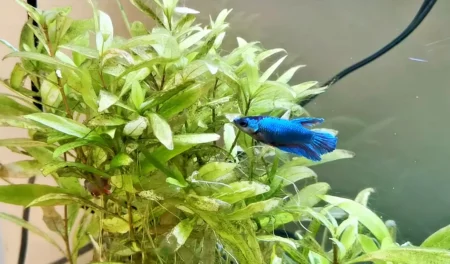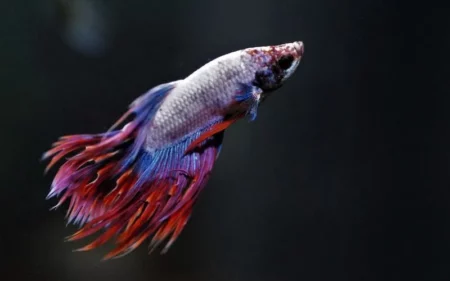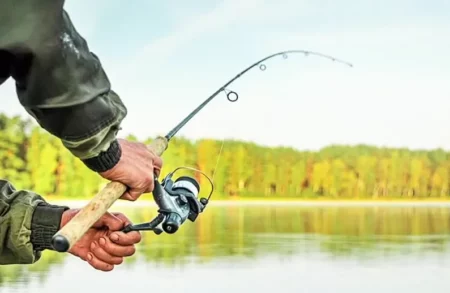God has given us so many reasons to pay gratitude, and if you love knowing about fish and its varieties, you won’t be disappointed to learn about puffer fish. It is super unique and beautiful at the same time. When a predator follows a puffer fish and catches that one, the puffer inflates its size, making it difficult for the predator to eat it. What does puffer fish eat, and everything you want to learn about it? Keep reading this article.
It converts into a ball shape when feels any danger. We’ll also be discussing whether you can eat puffer fish or not. On a lighter note, you can eat puffer fish only when you get it done by a licensed chef. Before cooking, it takes complete learning of the toxic substances you must remove from the puffer. However, in some parts of the world, people love consuming puffers.
What Does A Puffer Fish Look Like?
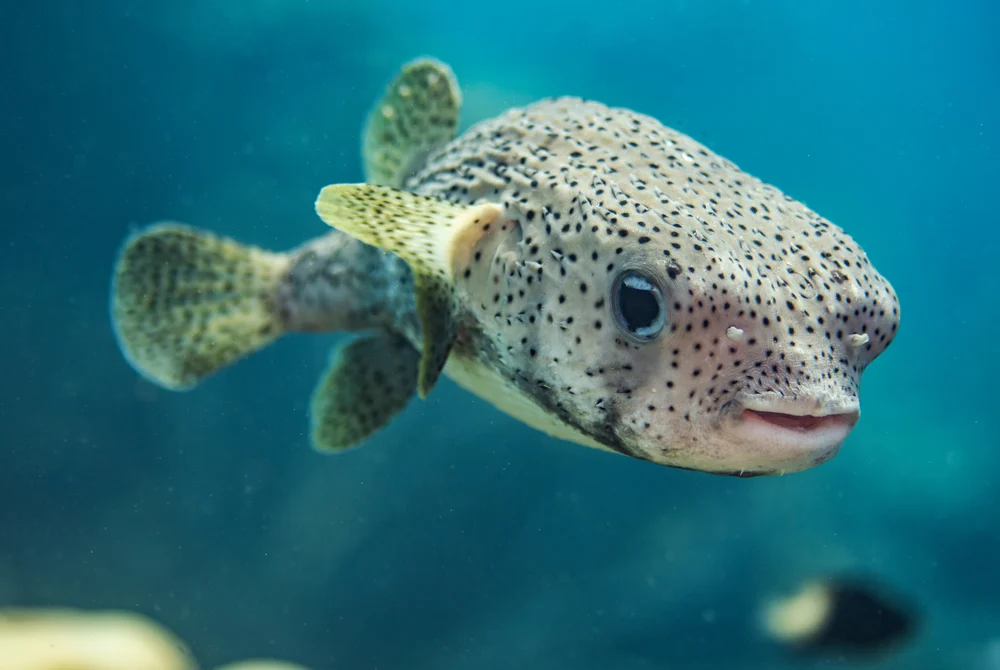
Puffer fish is a rare kind of fish with striking looks. It can change the body size in different scenarios. In normal routine, it glides like other fish, but when there is a danger in its surroundings, you will see it like a rolling ball. The body is round with a massive head with varying coloring patterns on the skin. Not all puffer fish have coloring patterns; some have spots.
Where Does A Puffer Fish Live?
When observing the living of puffer fish, it has a big home with no boundaries. Usually, you can spot a puffer in warm waters. And if you wonder, how does puffer fish move? It doesn’t take any pressure if nothing is there to disturb it, and moves freely.
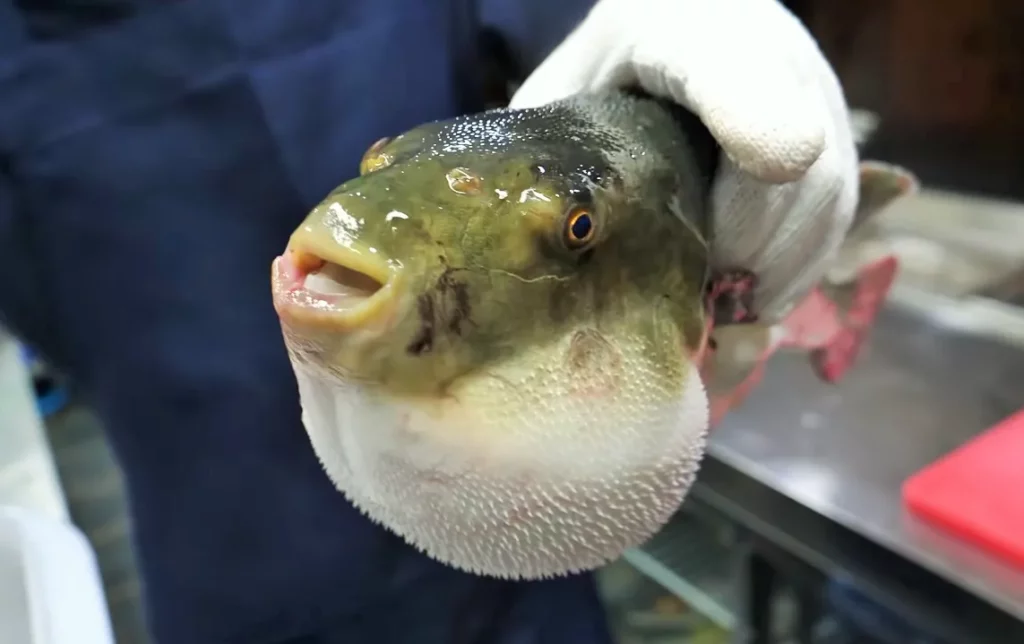
It glides the water slowly compared to many other fish species in the same water. It takes a lot of drills to find it in fresh waters instead, so save your time and get straight to the warm waters to learn about this beautiful and unusual creature.
What Do Puffer Fish Eat?
The puffer fish is unique from all other fish species, the same way it has an exceptional food menu. However, it has a long menu with varying items that can puffer all the proteins, nutritional value, and other needs.
Pufferfish eat lobsters, prawns, crabs, algae, and mollusks. It also loves to have insects on the dining menu. However, you can also find some eating oysters, clams, and insects. If you wonder, what do puffer fish eat in aquariums? The dieting pattern is almost the same. I also hope you have learned; What does puffer fish eat?
Difference in Diet Between Puffer Fish and Other Fishes
Most pufferfish species love to eat flesh; some eat animals and plants. Moreover, fish like trout and salmon live on plants only. So, the type of food may vary from species to species. Let’s get into the details of the puffer fish food chain.
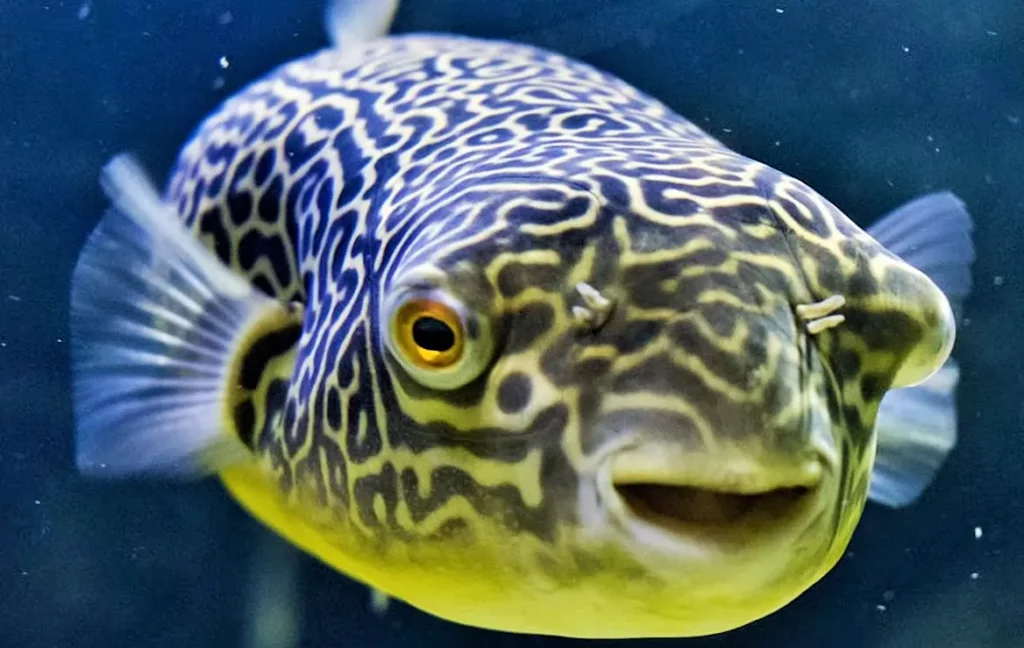
1) Particularity of Diet
If you have yet to encounter the highly picky eaters in the waters, you are welcome to learn about puffer fish. It is a fish that is very picky regarding edible items. It doesn’t get everything that comes its way but follows a particular eating behavior throughout its life span. However, its range of foods is long enough to get many options.
2) Feeding Patterns
You will not find puffers swimming very fast and sharp because they are slow swimmers who need to catch their prey better. They use a sense of smell for the ultimate food finding, and the powerful beaks play a crucial role in getting the prey down. What do puffer fish eat freshwater? Small targets are out there. Before I take you to more details, you can also learn about; what does a mullet fish look like?
3) Level of Toxicity
Most pufferfish species produce potent neurotoxin, which is unsafe for human health. However, consuming a small amount of potent neurotoxin may not be that harmful, but avoiding it is better. So, cleaning puffer flesh and removing toxic materials is a safe way to consume puffer.
Moreover, if you want to learn; how does puffer fish grow? It is all about when a puffer feels any danger or threat; it inflates its size magically to become uneasy prey for the predator.
What Does Baby Freshwater Puffer Fish Eat?
Baby freshwater puffer fish are alluring and attractive, and they love eating frozen food. It would help to remember that the bites should not be large enough to get them in trouble while digesting. Bloodworms and brine shrimps are the best food options for baby puffer fish in freshwater. Giving them a diet multiple times a day is also necessary, which plays a significant role in their better growth.
What Happens When You Eat Puffer Fish?
It is only reasonable to have a puffer to ensure the removal of all the harmful substances. Multiple body parts in puffer are good for human health; if you eat them, you may put your life at serious stake. There are licensed chefs worldwide who know how to clean a puffer and remove all the toxic objects to avoid every possible threat to human health. All you need to do is to find one for your meal.
Now I am wrapping up the topic by hoping you have learned about puffer fish, its eating pattern, appearance, habitat, and much more. When you find a very unusual fish with a pointed head that can sometimes convert its body into a ball shape, it means you got a puffer fish.
There are different species of puffer, each with a distinct diet pattern from crabs, lobsters, blood worms, mollusks, insects, algae, etc. Ultimately, you should not try it if you cannot trust the chef’s expertise.
Final Verdict
Pufferfish is not active hunter in the waters, and most of the time, it creates a pool with other fish species and gets them protection in exchange for food. However, it has the power to break down crustaceans and mollusks super easily with its powerful jaws.
If you observe green spotted puffers, you will find them eating plants and animals, depending on what they get quickly. Whether it is can, lobster, or algae, it eats these edible, and with its strong jaws and teeth, it can conveniently crush the shells of crabs and other animals.
It is only reasonable to eat if you have prepared it correctly. Removing all the toxic substances is inevitable for a safe and healthy meal, or you may find the opposite results. So, getting puffer fish prepared by trained and licensed chefs worldwide is the only way to consume puffer fish without worry.
